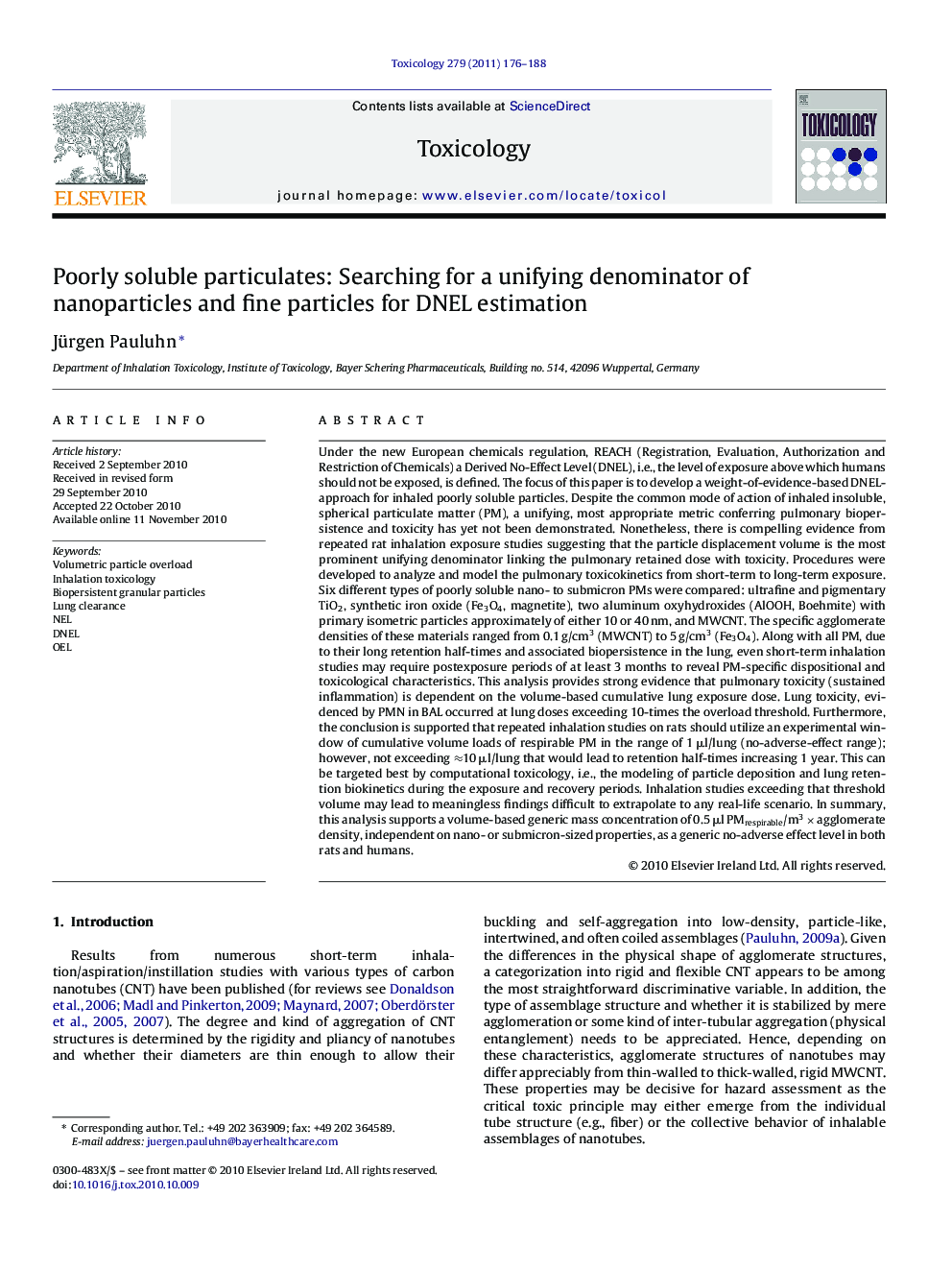| کد مقاله | کد نشریه | سال انتشار | مقاله انگلیسی | نسخه تمام متن |
|---|---|---|---|---|
| 2596097 | 1562379 | 2011 | 13 صفحه PDF | دانلود رایگان |

Under the new European chemicals regulation, REACH (Registration, Evaluation, Authorization and Restriction of Chemicals) a Derived No-Effect Level (DNEL), i.e., the level of exposure above which humans should not be exposed, is defined. The focus of this paper is to develop a weight-of-evidence-based DNEL-approach for inhaled poorly soluble particles. Despite the common mode of action of inhaled insoluble, spherical particulate matter (PM), a unifying, most appropriate metric conferring pulmonary biopersistence and toxicity has yet not been demonstrated. Nonetheless, there is compelling evidence from repeated rat inhalation exposure studies suggesting that the particle displacement volume is the most prominent unifying denominator linking the pulmonary retained dose with toxicity. Procedures were developed to analyze and model the pulmonary toxicokinetics from short-term to long-term exposure. Six different types of poorly soluble nano- to submicron PMs were compared: ultrafine and pigmentary TiO2, synthetic iron oxide (Fe3O4, magnetite), two aluminum oxyhydroxides (AlOOH, Boehmite) with primary isometric particles approximately of either 10 or 40 nm, and MWCNT. The specific agglomerate densities of these materials ranged from 0.1 g/cm3 (MWCNT) to 5 g/cm3 (Fe3O4). Along with all PM, due to their long retention half-times and associated biopersistence in the lung, even short-term inhalation studies may require postexposure periods of at least 3 months to reveal PM-specific dispositional and toxicological characteristics. This analysis provides strong evidence that pulmonary toxicity (sustained inflammation) is dependent on the volume-based cumulative lung exposure dose. Lung toxicity, evidenced by PMN in BAL occurred at lung doses exceeding 10-times the overload threshold. Furthermore, the conclusion is supported that repeated inhalation studies on rats should utilize an experimental window of cumulative volume loads of respirable PM in the range of 1 μl/lung (no-adverse-effect range); however, not exceeding ≈10 μl/lung that would lead to retention half-times increasing 1 year. This can be targeted best by computational toxicology, i.e., the modeling of particle deposition and lung retention biokinetics during the exposure and recovery periods. Inhalation studies exceeding that threshold volume may lead to meaningless findings difficult to extrapolate to any real-life scenario. In summary, this analysis supports a volume-based generic mass concentration of 0.5 μl PMrespirable/m3 × agglomerate density, independent on nano- or submicron-sized properties, as a generic no-adverse effect level in both rats and humans.
Journal: Toxicology - Volume 279, Issues 1–3, 11 January 2011, Pages 176–188